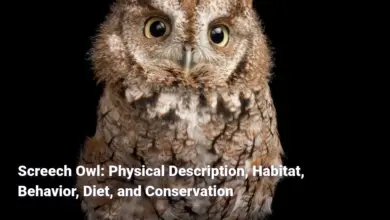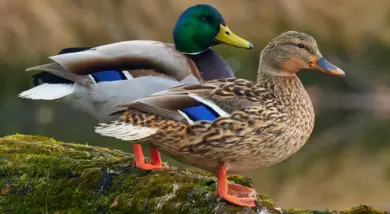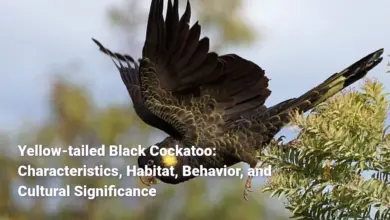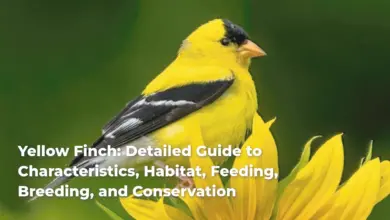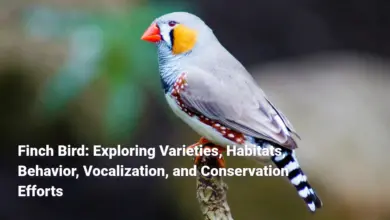Mourning Dove: Characteristics, Habitat, Reproduction, and Cultural Significance
Mourning doves, known by their scientific name Zenaida macroura, are enchanting birds that gracefully traverse the skies from North America to Central America. With their gentle cooing and remarkable adaptability, they have earned a special place in the hearts of many. Not only does their soft, melancholic call evoke a sense of peace and nostalgia, but it also permeates various aspects of culture, literature, and conservation discussions. This article aims to delve deeply into the multifaceted world of mourning doves, exploring their physical characteristics, behaviors, habitats, reproductive practices, threats they face, as well as their significance in human culture. In doing so, we will uncover the innate beauty and ecological importance of these lovely creatures and understand how they serve as a symbol for an array of themes in art and literature. Join us on this comprehensive journey to appreciate mourning doves for both their natural attributes and cultural resonance.
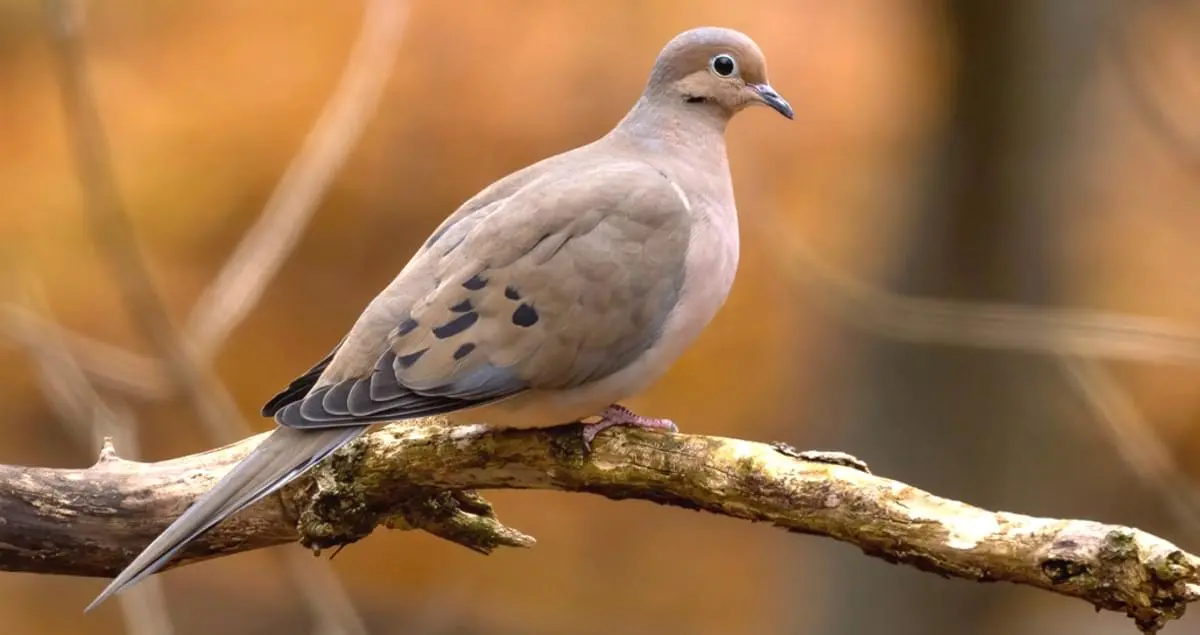
Characteristics of Mourning Doves
Mourning doves are known for their unique blend of beauty and utility, often evoking a sense of calm with their presence in urban and rural landscapes alike. Their physical features are as striking as their behavior, which allows them to stand out in their natural environment. The bird has a slender, streamlined body that contributes to its graceful flight, much like a feather drifting through the wind.
Physical Features
The physical features of mourning doves are emblematic of their adaptability and resilience. On average, these birds measure between 9 to 13 inches in length with a wingspan of about 15 to 18 inches. Their plumage is predominantly grayish-brown, presenting a muted color palette that aids in camouflage against predators. The light underparts contrast with the darker upper body, and intriguing black spots adorn their wings, creating a visually appealing mosaic when viewed from a distance.
- Coloration: Mourning doves sport varying hues depending on their geographical location, aiding their survival in specific habitats. For instance, doves residing in urban settings may exhibit slightly different shades that help them blend into built environments compared to those in rural areas.
- Distinctive Tail: One of the most captivating features of mourning doves is their long, pointed tail with distinctive white tips. This tail not only aids in maneuverability during flight but also creates a striking visual when the bird takes to the air, often accompanied by a soft whistling sound from their rapid wing beats.
- Beaks and Feet: Their short, thin beak and delicate pinkish legs reflect the starved nature of their primary diet seeds. Mourning doves typically forage from the ground, pecking at seeds and sometimes using their feet to push aside leaves and debris, demonstrating their adaptive feeding habits.
In essence, the physical characteristics of mourning doves exemplify their evolutionary design, showcasing the remarkable balance between aesthetics and functionality. Observing these birds in their natural habitats provides clues about their lifestyle and survival strategies, contributing to our understanding of the ecological networks they inhabit.
Behavior and Habits
Mourning doves exhibit a variety of behaviors and habits that reflect their adaptability. One of the most intriguing aspects of their behavior is their feeding habits, which are primarily granivorous, meaning they almost exclusively consume seeds. They can be likened to nature’s foragers, meticulously searching the ground for hidden treasures amidst foliage.
- Feeding Practices: Mourning doves boast a diet that consists of over 99% seeds, making them experts in foraging. They are often seen scratching the ground lightly to uncover seeds, their behavior reminiscent of a child digging for hidden gems in a sandbox. The amount they consume can range from 12-20% of their body weight in a single day, highlighting the importance of a reliable food source in their survival.
- Nesting Behavior: Their nesting habits reveal their adaptability. Mourning doves typically choose nesting sites that include trees, shrubs, and even human-made structures such as balconies and roofs. The nests they build are simple and often fragile, composed primarily of twigs and grasses. The collaboration between male and female during nesting is noteworthy; both participate in selecting materials and constructing the nest, reflecting a supportive partnership during one of the most critical phases of their life cycle.
- Mating Rituals: The courtship behavior of mourning doves is a spectacular sight, featuring displays of aerial acrobatics and soft cooing calls as males attract females. During breeding seasons, these affectionate gestures enhance pair bonding, facilitating a strong connection between partners.
- Social Interactions: Outside of the breeding season, mourning doves often form flocks that congregate in open areas, searching for food or resting together. Their soft cooing acts not only as a means of communication but also ties them socially, akin to friends sharing moments of tranquility in a busy world.
Overall, the behavior and habits of mourning doves exhibit a blend of simplicity and complexity, revealing a profound connection to their environment and each other. Their foraging techniques, nesting behaviors, and social interactions highlight their role within their ecosystems and their ability to adapt to ever-changing landscapes.
Habitat and Distribution
Mourning doves are amongst the most widely distributed bird species in North America, with populations spreading across various habitats. Their broad geographical range and ability to thrive in diverse environments underline their adaptability a quality essential for survival in the face of changing climates and human activities.
- Geographical Range: Mourning doves are primarily found across the United States, Canada, and Mexico, extending into parts of Central America and the Caribbean. Their total distribution measures approximately 11 million square kilometers, encompassing various terrains from wooded areas to urban regions.
- Preferred Habitats: They thrive in open woodlands, grasslands, shrublands, agricultural fields, and urban environments. Mourning doves are known for their versatility, as they prefer habitats that provide both food sources and suitable nesting sites. They often inhabit areas with scattered trees for perching and open spaces for foraging.
- Migration Patterns: Mourning doves are migratory birds, with northern populations journeying south in search of warmer conditions during winter months. Their seasonal movements are typically made in loose flocks during daylight hours, allowing them to cover significant distances while seeking optimal habitats.
- Impact of Human Development: The coexistence of mourning doves in urban settings demonstrates their flexibility; they can thrive in parks, gardens, and residential neighborhoods, benefiting from human activities that produce food sources such as seeds and grains.
Consequently, mourning doves illustrate an inspiring example of nature’s adaptability, navigating through landscapes molded by natural and human influences alike. Their ability to find habitats in diverse environments highlights their significance as a focal point for observing ecological changes and the interplay between animal behavior and habitat availability.
Preferred Environments
Mourning doves are remarkably adaptable birds that can thrive in a variety of environments, making them a common sight in both natural and human-altered landscapes. Their preference for open and semi-open habitats allows them to exploit food resources effectively while finding appropriate nesting sites.
- Urban Areas: One of the most intriguing aspects of mourning doves is their ability to reside in urban environments. They are frequently seen in parks, gardens, and residential neighborhoods. For example, the verdant parks of metropolitan areas often provide ample forage opportunities, with seeds from ornamental plants and grasses supplementing the birds’ diet.
- Agricultural Lands: Agricultural regions offer another preferred environment for mourning doves, as these areas consist of expansive fields filled with grains and seeds. Farms provide abundant feeding opportunities, making them attractive landscapes for these often-seed-foraging birds. Their presence can signify the health of farmland ecosystems, as they thrive in areas with minimal pesticide use.
- Grasslands and Shrublands: Open grasslands and shrublands are ideal habitats for mourning doves because they often contain a variety of seeds and other natural food sources. These ecosystems not only support feeding opportunities but also provide the necessary cover for nesting away from ground predators.
- Forested Environments: While mourning doves prefer open spaces for foraging, they can also be found near forest edges, where they still have access to safety and cover. The dappled sunlight filtering through the leaves creates inviting foraging spots among the leaf litter and seeds strewn on the ground.
In essence, the preferred environments of mourning doves reveal their versatility as a species, able to adapt to and thrive in a plethora of ecosystems. This adaptability has allowed them to flourish in a world where human encroachment often changes habitats, making them an important species to monitor for ecological health.
Geographic Range
Mourning doves boast an extensive geographic range that reflects their adaptability and resilience. Their ability to thrive in diverse habitats across North America and parts of Central America showcases their ecological significance.
Geographic Distribution Overview:
- North America: Mourning doves are primarily found across the continental United States, reaching southern Canada and extending into Mexico. Their distribution typically covers farmland, parks, and gardens areas where humans engage in cultivation and landscaping.
- Central America and Caribbean: The range extends into parts of Central America and the Caribbean, indicating their reliance on optimal weather conditions conducive to survival and reproduction. Some populations can even be spotted as far south as northern South America, although these remain isolated.
Migration Patterns:
- Mourning doves are migratory birds that engage in seasonal movements, primarily depending on winter conditions. Northern populations migrate south to avoid harsh winter weather, while those residing in milder southern regions may remain year-round.
- These movements tend to occur in organized loose flocks, a behavior that enables energy-efficient travel over expansive distances. In migration, these birds utilize established flyways, often returning to familiar nesting grounds in spring.
Habitat Diversity:
- From woodlands and grasslands to urban and suburban areas, mourning doves showcase an impressive range of adaptability. Their presence in bustling cities demonstrates their ability to thrive where developmental changes transpire, provided they have access to food sources and nesting locations.
- Their broad distribution allows for a more robust understanding of regional ecological health. The adaptability of mourning doves underscores their significance, rising to the challenges imposed by environmental change while reinforcing the need for ongoing conservation strategies.
In summary, the geographic range of mourning doves not only illustrates their adaptability but also cements their role as vital components of diverse ecosystems across North and Central America. Monitoring their populations and habits can provide valuable insights into the overall health and sustainability of these landscapes.
Reproduction and Parenting
The reproductive strategies and parenting behaviors of mourning doves are tailored to their environmental conditions, showcasing their ability to thrive across diverse habitats. Through cooperative breeding practices and adaptable nesting methods, they enhance their chances of rearing successful offspring.
Mating Rituals
- Courtship Behavior: Mourning doves typically form monogamous pairs that often mate for life. During courtship, males engage in a series of intricate displays, including soft cooing calls, puffing up their bodies, and performing aerial acrobatics to attract females. These displays are both visual and auditory, creating a captivating show reminiscent of a dance that underscores the importance of attraction in establishing a partnership.
- Selecting Nesting Sites: Once paired, both males and females collaborate in building nests, typically opting for elevated sites in trees, shrubs, or even human-made structures. Their nests are generally simple, constructed with twigs and grasses, reflecting both the urgency and efficiency of their breeding patterns.
- Shared Responsibilities: Mourning dove pairs exhibit shared duty in incubating their eggs and rearing their young. They often lay two eggs, which hatch approximately 14 to 15 days later, during which time both parents take turns incubating. This cooperative behavior not only enhances their reproductive success but also strengthens the bond between pairs.
Parental Care
- Nurturing the Young: After the eggs hatch, both parents engage in feeding the chicks through a unique means of regurgitating “crop milk.” This nutrient-rich substance, produced in the parent’s digestive system, aids in the rapid growth of the nestlings, allowing them to leave the nest within 15 to 20 days after hatching.
- Tolerance of Human Presence: Mourning doves have shown an intriguing tolerance for human encroachment, often nesting close to homes and within urban settings. Their adaptability to human presence reflects a broader trend in wildlife, highlighting their ability to coexist with people and prosper even in diverse environments.
- Multiple Broodings: These birds can produce multiple broods throughout the breeding season, often reusing old nests or constructing new ones efficiently. This behavior represents a significant reproductive strategy, enabling mourning doves to maximize their offspring in optimal conditions.
In conclusion, the reproductive and parenting behaviors of mourning doves exemplify their adaptability and resilience. By forming strong pair bonds, sharing parental duties, and responding to various environmental pressures, mourning doves enhance their chances of survival and success in breeding, showcasing the intricate dance of life in the natural world.
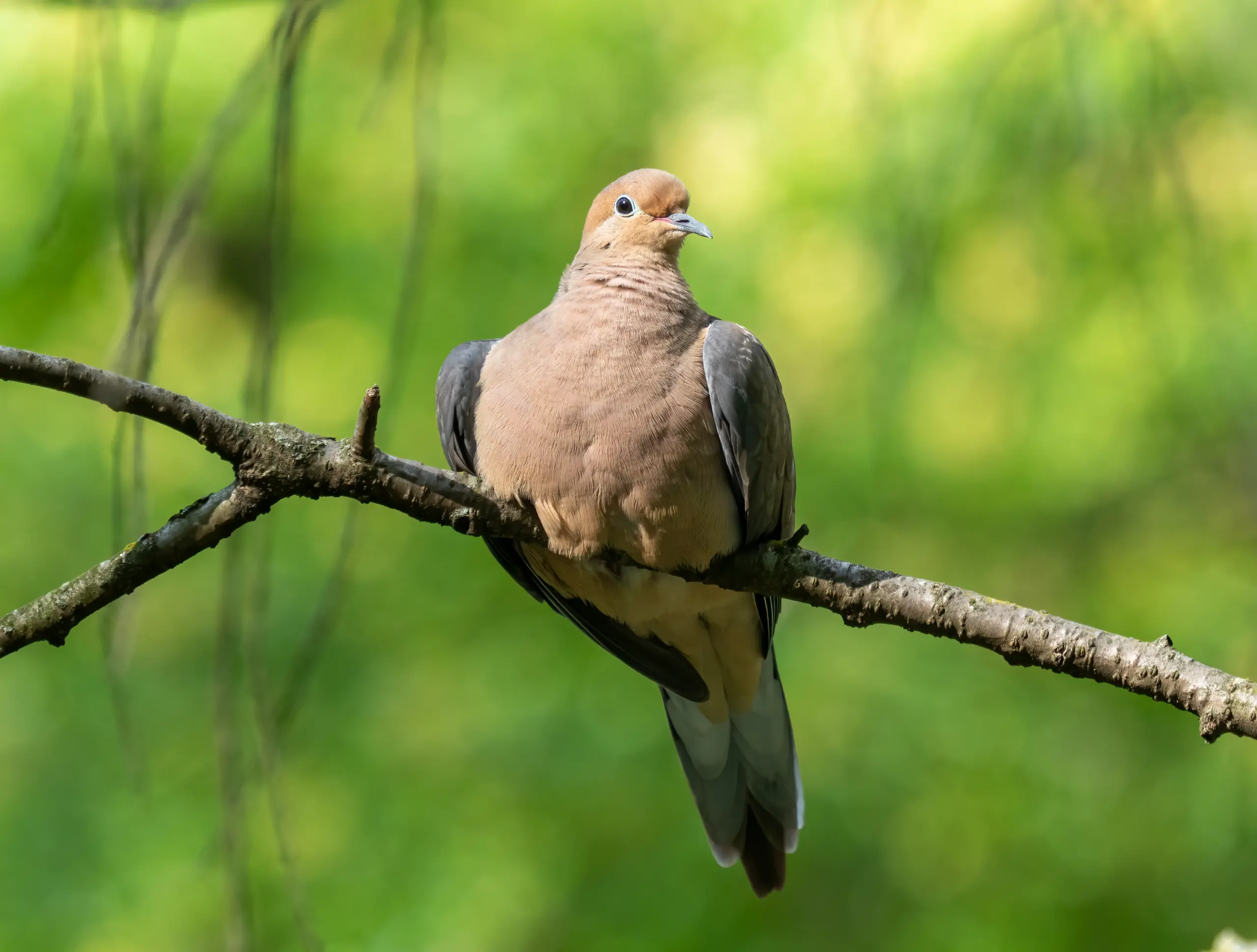
Nesting Practices
Mourning doves exhibit unique nesting practices that reflect their adaptability and connection to their environments. With an emphasis on efficiency rather than complexity, their nesting habits provide valuable insights into their reproductive strategies and overall survival.
- Nest Construction: Mourning doves typically build nests at varying heights, often found in trees, shrubs, or even on the ledges of buildings. The females are primarily responsible for constructing the nests, which generally takes only a few days. With limited materials, their nests often lack structural sturdiness, showcasing a minimalist approach.
- Nest Placement: Nests are typically constructed in sheltered locations, aimed at reducing the vulnerability of eggs and nestlings to predators. The flimsy nature of their nests may seem disadvantageous, but it allows for swift construction and relocation as conditions change, demonstrating their resilience.
- Incubation Phase: Mourning doves lay two eggs, which both parents incubate jointly for about 14-15 days. Their shared responsibility during this phase is crucial for the successful hatching of the eggs. After hatching, both parents feed their young and care for them collectively until they fledge.
- High Tolerance to Human Activity: Their ability to nest in proximity to human activity indicates a remarkable tolerance, allowing them to thrive in urban ecosystems. For instance, mourning doves frequently build nests in gardens or on balconies, showcasing their adaptability in finding suitable nesting locations, even in modified habitats.
- Multiple Nests: The quick turnaround between broods and the reusability of nests illustrate the mourning dove’s efficiency in nesting and brooding. They often engage in several reproductive cycles during a single breeding season, which correlates with the availability of resources and suitable conditions.
Overall, the nesting practices of mourning doves highlight their adaptability and efficiency in the face of environmental fluctuations. They balance the need for protection and security with the instinctual drive to reproduce and care for their young, reflecting a delicate harmony within their life cycle.
Threats to Mourning Doves
Though mourning doves are one of the most widely distributed bird species across North America, they face a myriad of threats that impact their populations and overall well-being. Understanding these threats is crucial for developing effective conservation strategies.
Natural Predators
Mourning doves are vulnerable to a variety of natural predators, making them mindful of their surroundings as they navigate their environments.
- Birds of Prey: The primary natural predators of mourning doves include diurnal birds such as hawks and falcons. These skilled hunters often swoop down from above, putting the doves at significant risk while they feed or nest.
- Nocturnal Threats: Owls pose a risk during the night, capitalizing on the mourning dove’s vulnerability when roosting or nesting.
- Ground Predators: Ground-based predators such as foxes, raccoons, and domesticated cats also threaten mourning doves, particularly when they are foraging on the ground or nesting close to human habitation.
Human Impact
Human activities significantly impact mourning doves, often through habitat degradation and hunting pressures.
- Habitat Loss: Urbanization and agricultural practices have led to a decline in available habitats where mourning doves can feed and nest. The destruction of open spaces, grasslands, and shrublands reduces the habitats that support their populations, impacting their long-term survival.
- Hunting Pressures: Mourning doves are one of the most hunted bird species in North America, with around 20 million being harvested annually during regulated hunting seasons. While these activities are monitored to ensure sustainability, the cumulative impact of hunting can still impose stress on regional populations.
- Human Disturbance: Although mourning doves can tolerate some level of human presence, consistent disturbances such as loud noises or human activities near nesting sites can cause stress and lead to nest abandonment.
- Environmental Changes: Extreme weather events, resulting from climate change, can damage nesting habitats and lead to food scarcity. Altered precipitation patterns and temperature fluctuations threaten their survival, particularly during breeding seasons.
By acknowledging and addressing the threats facing mourning doves, conservation efforts can be better directed towards preserving their habitats and ensuring their populations remain sustainable. Awareness and education surrounding human impacts are essential in fostering cohabitation between mourning doves and people.
Conservation Efforts
With the numerous challenges faced by mourning doves, concerted conservation efforts are essential for their continued survival. Various organizations and governmental bodies are undertaking initiatives aimed at protecting mourning doves and their habitats.
- Habitat Protection: Conservation agencies focus on preserving open and semi-open environments critical for mourning doves. Efforts involve protecting grasslands, parks, and farmlands that provide essential food sources and nesting sites. Strategic habitat restoration projects ensure that these birds have the necessary resources for thriving populations.
- Sustainable Hunting Practices: Regulatory frameworks are in place to manage mourning dove hunting seasons sustainably. This provides hunters with opportunities while ensuring that populations remain stable over time. Ongoing monitoring allows for adjustments to hunting regulations based on population assessments.
- Public Awareness Campaigns: Educational initiatives inform the general public about the importance of mourning doves and the need for responsible outdoor practices, especially related to pet ownership and minimizing disturbances in natural environments.
- Research and Monitoring: Scientific research on mourning doves contributes to understanding their ecology, behavior, and population dynamics. This knowledge informs management decisions and conservation strategies. The U.S. Fish and Wildlife Service regularly conducts population assessments, enabling targeted conservation actions.
Through a combination of habitat preservation, sustainable hunting practices, and community involvement, efforts are underway to ensure the continued existence of mourning doves in North America. Engaging local communities not only raises awareness about the species but fosters a sense of stewardship, connecting people to nature in a meaningful way.
Cultural Significance
Mourning doves hold significant cultural and symbolic value across various societies, particularly in North America. Their presence resonates in literature, art, and even conservation initiatives, enriching the human experience through their grace and beauty.
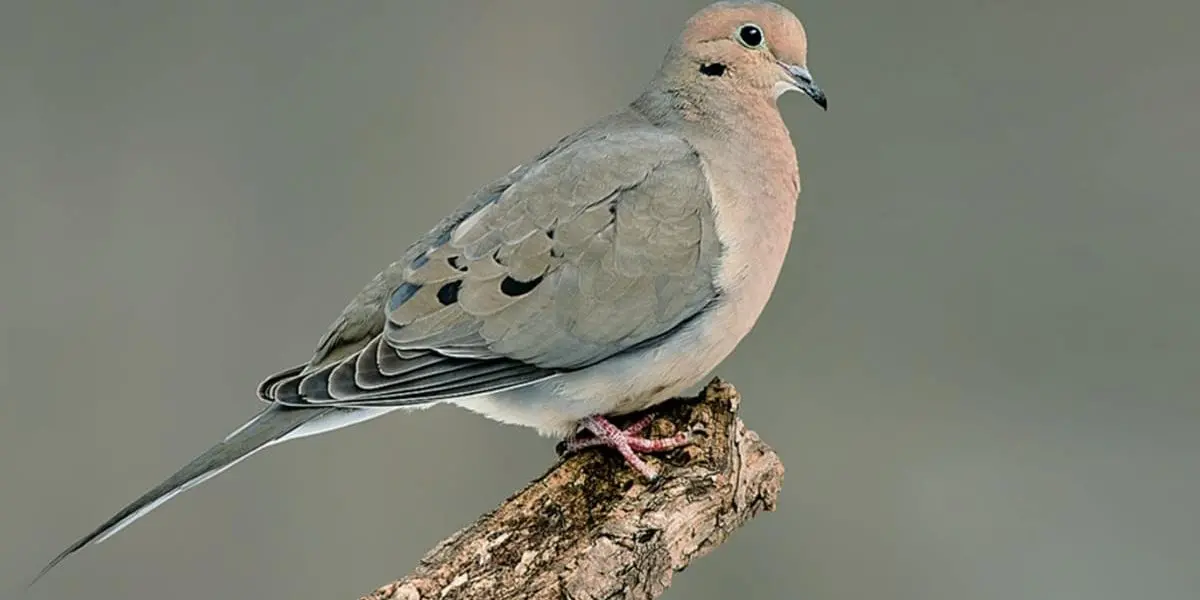
Symbolism in Literature
In literature, mourning doves frequently emerge as powerful symbols linked to themes of peace, love, loss, and renewal. Their gentle cooing sound evokes feelings of melancholy, making them compelling figures in storytelling.
- Metaphors of Mourning: The symbolism of mourning doves often aligns with themes of grief and remembrance. Their mournful calls can be interpreted as reflections of sorrow or longing, resonating with characters and narratives that explore human experiences of loss. For example, in William Faulkner’s As I Lay Dying, mourning doves signify the emotional burdens carried by the family members and their complex emotions surrounding death.
- Signifier of Peace: In contrast, in several Native American cultures, mourning doves symbolize peace, love, and harmony. Their gentle presence invites a sense of tranquility, serving as reminders of the interconnectedness of all living beings.
- Symbol of Love: The bond between mourning doves serves as a metaphor for interconnections between relationships. Their monogamous nature highlights themes of fidelity and devotion, particularly in romantic literature where they symbolize enduring love.
Representation in Art
In the realm of art, mourning doves have captured the imagination of many artists through the ages, representing peace, grace, and the eternal cycle of life.
- Visual Arts: Artists often depict mourning doves in paintings and sculptures, imbuing them with meanings tied to themes of nature, spirituality, and human emotion. For instance, depictions of mourning doves in tranquil landscapes evoke feelings of serenity, establishing connections between natural beauty and reflective contemplation.
- Cultural Symbolism: Culturally, mourning doves symbolize hope and renewal. Artists may integrate the mourning dove into works that reflect themes of recovery and rebirth, suggesting a comforting presence amid tragedy.
- Dove as a Peaceful Figure: Throughout history, the imagery of the mourning dove is frequently associated with peaceful moments, reminiscent of quiet days spent in nature, encouraging viewers to appreciate the simplicity and beauty of life itself.
In both literature and art, the representation of mourning doves enriches the cultural landscape, intertwining their significance with human emotions and experiences. By acknowledging these birds’ themes in creative expressions, we foster a deeper appreciation for their roles in our world.
Mourning Dove in Popular Media
While mourning doves may not feature prominently in mainstream popular media, their influence subtly pervades cultural narratives and artistic expressions in various forms.
Films and Documentaries
Although explicit references to mourning doves in major films are sparse, the creatures find representation in independent works and documentaries that explore themes related to nature and emotional narratives.
- Mourning Dove Films: An independent film production company, Mourning Dove Films, centers its mission on reviving cinema as a profound art form. Their works often explore themes akin to those symbolized by mourning doves serenity, loss, and hope though the bird itself may not always be referenced directly. Titles such as A Moment is Enough and A Shadow of Peace reflect emotional struggles that resonate with the ideological underpinnings associated with mourning doves.
- Narratives Conveying Nature: Wildlife documentaries frequently feature various avian species, including mourning doves, highlighting their role in the ecosystem. Audiences can catch glimpses of these birds in their natural habitats, contextualizing their behaviors and farther underscoring their ecological importance.
- Literary Adaptations: Mourning doves, as a literary metaphor, also find their way into adaptations of classic literature. As works exploring themes of love, loss, and the human connection to nature are adapted for film, the symbolic significance of mourning doves may manifest in character motifs or visual storytelling.
While specific films may center on mourning doves, their symbolic presence resonates throughout artistic expressions, emphasizing their enduring connection to humanity’s emotional experiences.
Role in Literature
The contributions of Mourning Dove, the pen name of Christine Quintasket, have resulted in significant impacts on American literature. Often acknowledged as one of the first Native American female novelists, her works weave indigenous narratives into the broader American narrative.
- Pioneering Contributions: Her most well-known work, Cogewea, the Half-Blood (1927), explores themes of cultural identity, mixed heritage, and womanhood while bridging the gap between indigenous and European cultures. The novel presents a nuanced perspective rooted in her experiences, leading to an increased understanding of Native American life.
- Traditional Narratives: In Coyote Stories (1933), Mourning Dove further delves into traditional Native American tales, showcasing the significance of oral storytelling. This collection emphasizes the connection between indigenous cultures and nature, further enriching American literary discourse.
- Resurgence of Interest: Recent academic discussions appreciate Mourning Dove’s work in the context of multicultural literature and indigenous representation. Her narratives promote the inclusion of diverse perspectives and highlight the importance of personal interpretation of texts among contemporary readers.
As the literary contributions of Mourning Dove continue to gain visibility, they play a fundamental role in shaping narratives that advocate for indigenous voices, providing insight into their experiences and enrichening the complex tapestry of American literature.
In conclusion, the mourning dove, both as a species and as a profound cultural symbol, serves as a reminder of the legacies that wildlife and nature can convey in our lives. Through literature, art, and conservation, mourning doves evoke themes of peace, love, and resilience, encouraging ongoing engagement with the natural world and fostering empathy toward the creatures that share it with us. By celebrating both their ecological significance and cultural resonance, we acknowledge the mourning dove’s important place within our collective narrative.





